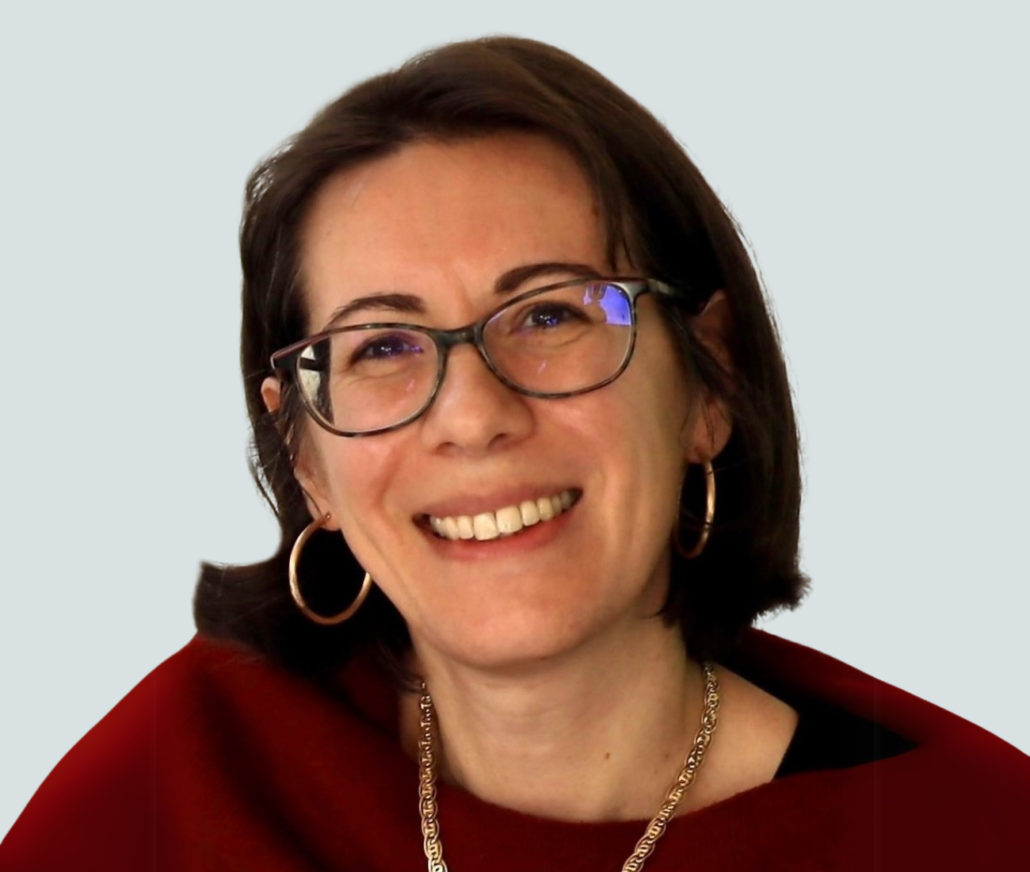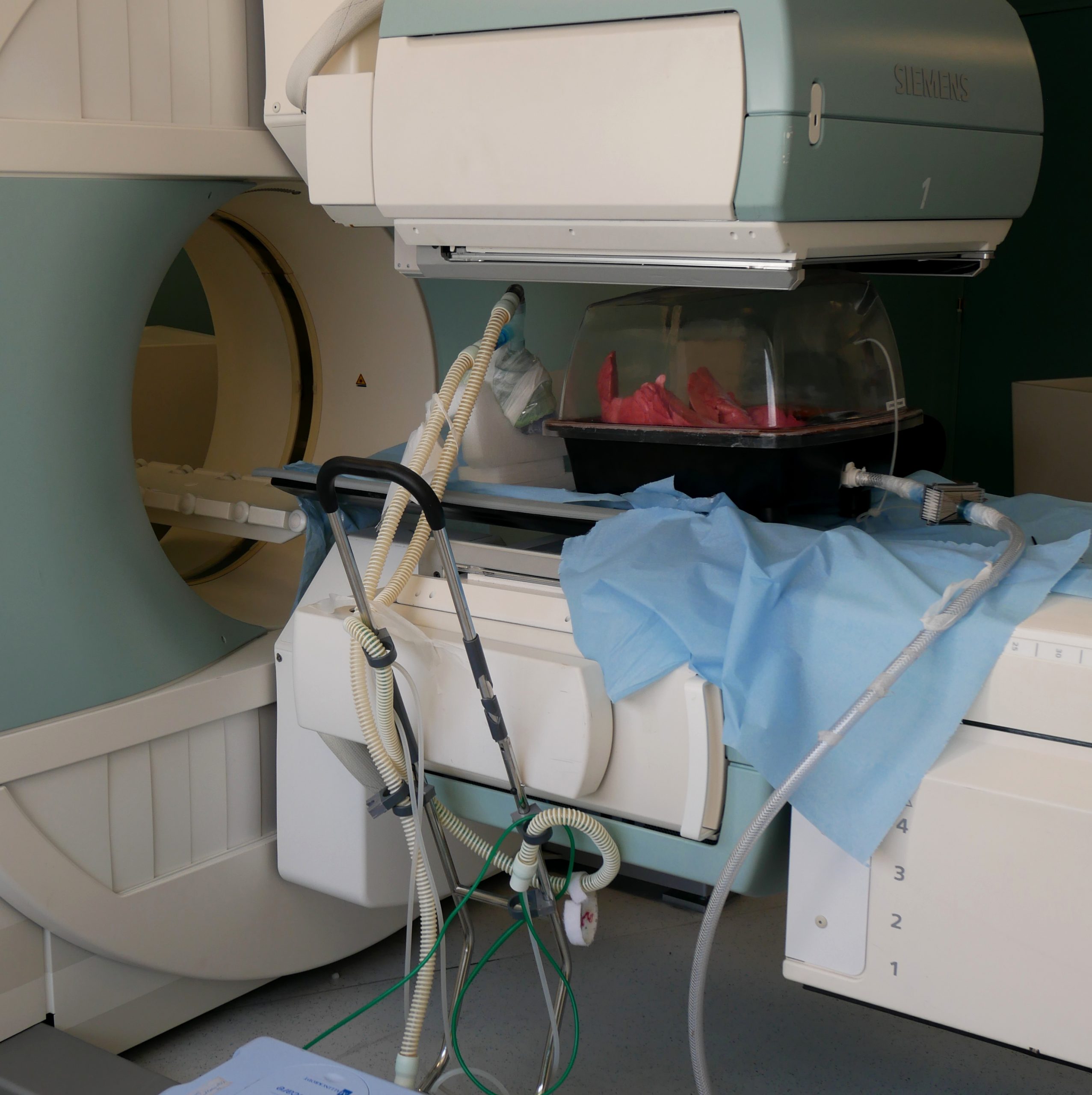“Originally, I thought I’d only study for a short period!” recalls Valérie Forest with amusement. However, after completing a DEA (equivalent to a Master’s degree in research) in Biological and Medical Engineering, she embarked on her doctoral adventure at the Université Jean Monnet in Saint-Étienne, her hometown. “I was drawn to a fascinating research topic”, she explains.
The fascinating subject in question? Studying the biological effects of cryotherapy and chemotherapy on human lung tumors. This was her first research topic, and her first experience in the medical world, a field she would never leave.
After completing her thesis, Valérie Forest left Saint-Étienne for Montreal, where she completed two postdoctorates at the Montreal University Hospital Research Center and the Cancer Institute. This was an opportunity to see her thesis subject from a different angle and to acquire new techniques. In 2010, when she returned to her hometown, she joined the ranks of Mines Saint-Étienne, as assistant lecturer at the Engineering and Health Center.
“I wanted to be useful to society”
Her research focuses on the toxicity for cells – or cytotoxicity – of particles and nanomaterials, and she often works in partnership with physicians. This is a phrase regularly uttered by the researcher, who was recently recognized as one of the world’s most influential scientists by “Stanford/Elsevier’s Top 2% Scientists” ranking: “I wanted to be useful”. Working with the medical world was therefore an obvious choice for her. This desire to be useful has been her mantra since the start of her career. It is also what guided her towards applied rather than basic research: “I wanted to do something meaningful, for my research to have a purpose”.
Today, as head of the Biological Activity of Inhaled Particles (BioPI) department at Mines Saint-Étienne, it’s with a smile on her lips and pride in her voice that she tells us about her role there. “BioPI is a laboratory where it’s not possible to get bored, as there is no set routine.” The research carried out there very much reflects its manager: very assiduous, with potential benefits for society. The research is focused on the biological activity of inhaled particles, both in a pathological context – cytotoxicity – and in a therapeutic context, with aerosol therapy. This method of treatment involves getting a patient to inhale medication suspended in a gas. It is used to treat certain pulmonary disorders such as asthma.
A laboratory that keeps up with the times
Studying the effects that microplastics and nanoplastics have on health is currently one of Valérie Forest and her team’s key areas of research. Particularly the methodological aspect. The potential adverse effects that this small plastic debris can cause are generally assessed using in vitro models, i.e. cells grown in the laboratory, outside a living organism. However, due to certain specific characteristics of microplastics and nanoplastics, questions arise as to the effectiveness of conventional tests to assess their toxicity.
“These particles sometimes present such a low-density that they float on the surface of the in vitro culture medium,” explains the researcher. They therefore don’t come into contact with the cells, which are on the bottom of the culture plates. As a result, the potential adverse effects are not properly assessed. To overcome these problems, Valérie Forest and her team have put forward a number of solutions based on the scientific literature, such as the use of mathematical models to accurately determine the dose of particles administered to the cells.
The resulting article on this theme was published in the scientific journal Environment International, and it highlights the importance of using standardized protocols, as well as samples and experimental conditions more representative of actual exposure. A technical issue, but a crucial one, at a time when microplastic pollution is regularly featured in the headlines. “The research we carry out at BioPI is adapted to current concerns,” explains Valérie Forest. In 2020 for example, the laboratory studied the effectiveness of medical masks against Covid-19, drawing on their expertise in the field of aerosols.
Her laboratory also works in partnership with industrial groups, to support them in their safety initiatives. “We’re here to serve the public. And public safety also involves the safety of industrial facilities,” she explains.
Tires collect pollution as they roll
The BioPI team is also looking into a lesser-known but equally worrying issue, the impact on human health of particles generated by tire and road wear. These particles result from friction between tires and road surfaces, and are a major source of air pollution, independent of exhaust emissions. “Exhaust emissions have been extensively studied and regulated. However, particles from tire wear remain omnipresent, even with the transition to electric vehicles. This issue is often overlooked,” deplores Valérie Forest.
In a recent publication, the researcher and her team highlighted the dangers associated with these particles. Their inhalation can induce inflammation in lung cells, and cause damage to DNA. Despite these risks, their toxicological assessment is still largely inadequate, says the researcher.
Using education as a support tool
Valérie Forest’s arrival at Mines Saint-Étienne in 2010 was the beginning of her commitment to teaching. At the time, the Engineering and Health Center was expanding rapidly, and the school wanted to better prepare its students for the challenges of the healthcare sector. She was in charge of devising and implementing biology courses, and developed a program aimed at providing students with the essential foundations in life sciences, compulsory for those wishing to progress in this sector. Today, she is responsible for the Biomedical Engineering Major, where she teaches a variety of disciplines, from cell biology to nanotoxicology.
Teaching is central in her career as a researcher, not only through the courses she teaches, but also and above all because she is a mentor for young researchers in the laboratory. For her, teaching is also a support tool. “Everything I’ve learned, I try to pass on. Particularly scientific rigor and how to present results, which is sometimes just as crucial as the results themselves.” She likes to think that she’s helping to shape the scientific minds of the future, and perhaps even inspiring vocations.
Valérie Forest is discreet by nature and reluctant to put herself in the spotlight. She confesses to not being “very into social networks”. Yet she makes no secret of her satisfaction at having been recognized as one of the world’s most influential scientists in the “Stanford/Elsevier’s Top 2% Scientists” ranking. “I was delighted, if not a little surprised,” she admits. A recognition she welcomes with humility, true to her mantra: “All I wanted to do was make myself useful.”






